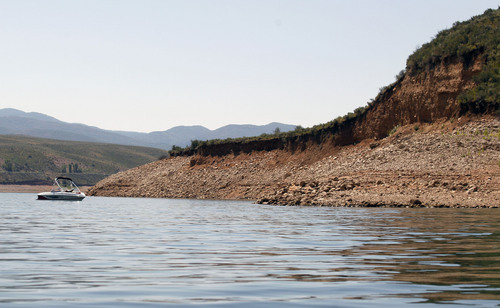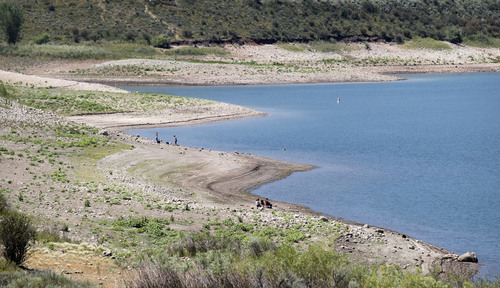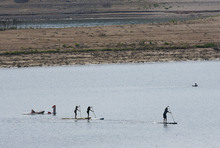This is an archived article that was published on sltrib.com in 2014, and information in the article may be outdated. It is provided only for personal research purposes and may not be reprinted.
Even as the biggest storm of the 2013-14 winter is set to drop up to 4 feet of snow in the Cottonwood Canyons through Sunday, Randy Julander remains concerned that it won't be enough to quench the thirst of agriculture, water managers and recreationalists this summer.
"We need a series of these storms to keep the hole from getting deeper," said Julander, Utah's snow survey supervisor for the Natural Resource Conservation Service. "The next two months are very critical."
Utah's snowpack as of Feb. 1 was 75 percent of normal, compared to 92 percent of normal last year on the same date, according to the Utah Water Supply Outlook Report released this week by the Natural Resource Conservation Service.
January's precipitation, or the lack thereof, at 63 percent of normal did not help the water outlook for 2014. The seasonal accumulation (October through January) is 72 percent of average, according to the report.
Reservoir storage across the state is at 48 percent of capacity, compared to 57 percent last year.
The one area showing improvement is soil moisture. Last year, soil across the state averaged 46 percent moisture. This year it is a little higher, at 51 percent, but not enough to proclaim any kind of a water victory.
"We are now going into our third year of below normal. When you have carry over from the prior year you can make it through the year in much easier fashion, but we are about 9 percent below last year and about 30 to 40 percent below from the year before," Julander said. "Reservoir managers are going to be slamming on the brakes trying to save every drop they possibly can."
Relief for the drought does not appear to be on the way. Long term forecasts, Julander says, show northern Utah has an equal chance of dry or wet conditions in the coming months. Southern Utah, meanwhile, is slated to be dry.
Southern Utah started the water year out at 130 percent of normal, but has dropped significantly.
"We had high hopes for southern Utah, but those got smashed in a hurry," Julander said. "If we see this persistence we could be down below 50 percent. That's a scary place to be."
An even scarier possibility faces states to the west of Utah.
"Nevada and California have snowpacks in the single digits. Things like 5 percent of average," Julander said. "In northern Utah we see 70, 75 and even some 80s. We should be able to make do."
The outlook has changed dramatically since the spring of 2011, when dam operators watched the snowpack for an entirely different reason: too much.
"I have fond memories of that time," Julander said. "Since then it has been all downhill."
Twitter: @BrettPrettyman







